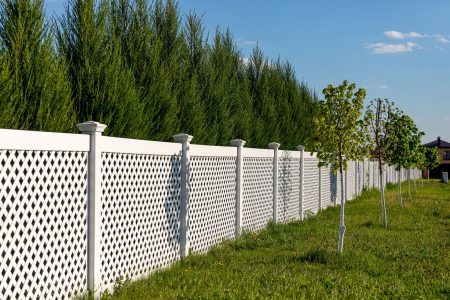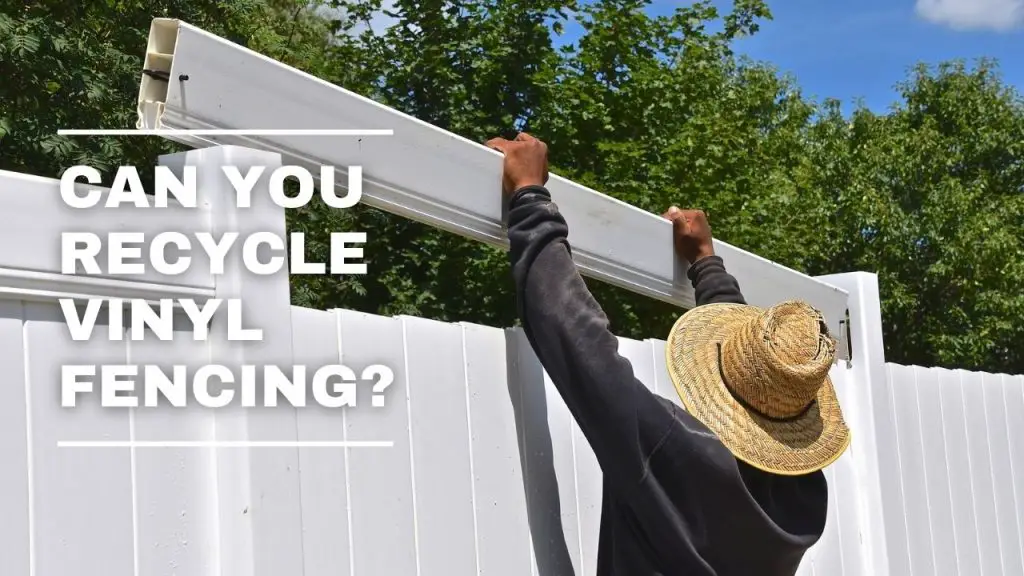Vinyl fencing is an incredibly tough material. It is no wonder that more and more people are starting to use it. Of course, unless your measurements are very accurate, you are bound to have some leftover vinyl fencing once everything has been installed.
Vinyl fencing can be recycled. Most recycling centers will be able to take care of old vinyl fencing, but a better option is to take it to a vinyl fence manufacturer, as they can put more of it to use. Do not throw vinyl fencing in the trash; it will not be accepted.
So, what can you do with it? Can it be recycled? Let’s take a look.
Can Vinyl Fencing Be Recycled?
Absolutely!
It is a very, very easy product to recycle, and it can be made into all sorts of valuable products. In fact, in many cases, it will be turned into some more vinyl fencing!
Where Can You Recycle Vinyl Fencing?
Most recycling centers will accept vinyl fencing. However, you can always call ahead to make sure.
In recent years, nearly every single manufacturer of vinyl fencing has some scheme in place where you can hand your old fencing back to them. They will be able to recycle it. This is often a far, far better method than heading to a recycling center, as the vinyl fencing manufacturers will be able to put all the fencings to use. In contrast, recycling centers may only be able to use a fraction of it.
Can PVC Fencing Be Recycled?
We are going to mention PVC fencing quickly. This is because some vinyl fencing will add a small amount of PVC to the mixture. Not all of it, but some.
If you have any PVC fencing, you will not be able to take it to the recycling center. They will not have the equipment to separate the vinyl from the PVC.
It isn’t something they will be dealing with often either, so it is unlikely that they will ever have the equipment. It would be best if you also remembered that PVC is not recyclable.
In this case, the only real solution is to send the fencing off to the manufacturer. They will be able to use it to make new products. This means that at least some users will come out of it, and the fencing will not end up in a landfill.

How Do You Prepare Vinyl Fencing For Recycling?
If you are trying to recycle some old scraps of vinyl fencing that have never really been used outside of being cut up to size, then you don’t need to do anything to prepare it. Please take it to the recycling center or send it back to the manufacturer.
If the vinyl fencing is old and has been exposed to the elements for several years, we suggest you try to clean it up as best as possible. This isn’t strictly necessary.
However, you may find that there are some recycling centers out there that may turn down the vinyl fencing if it is a little bit too dirty. This is because it is a lot harder to process than that.
What Happens When You Recycle Vinyl Fencing?
Whether you send the vinyl fencing back to the manufacturer or a recycling center, the process is pretty much the same. However, as we said before, recycling centers will not be able to deal with PVC in vinyl fencing as they would have to separate the materials, which they cannot do. This isn’t a problem for vinyl fencing companies as there would be no real need to separate the materials to make new products.
The process begins by sorting through the vinyl fencing and other plastics. The recycling team needs to ensure that everything in their machine is recyclable.
This is why it is essential to attempt to clean the vinyl fencing. If it has too many things, the recycling center may decide it cannot be recycled as it would be difficult for them to separate the vinyl from the extra compounds.
Once the vinyl fencing that will be recycled has been selected, it will be thrown into a big grinder. This will grind the vinyl up into almost a powder. The idea is to ensure that everything is of an exact size. This makes the next stage a bit easier to perform.
The next step involves that powder being melted. So, it will end up being liquid vinyl. Chemicals will then be added to this liquid to help separate anything that isn’t vinyl, i.e., the recycling center will be purifying the material.
Finally, the molten plastic will be set into molds. If a recycling center does the recycling, this vinyl will be shipped to factories. If you have sent the vinyl back to a manufacturer, they will use it to make new fences.
Can You Put Vinyl Fencing in the Trash?
No.
Most places prohibit you from putting industrial waste like this in the trash. You can’t even leave it by the side of the road. If you want to get rid of your vinyl fencing, you must either go to the recycling center or ship it off to the manufacturer.
We wouldn’t suggest that you put the vinyl fencing in a dumpster, either. This will end up in a landfill where it will stay for centuries (vinyl is not biodegradable!). It makes no sense to pollute the environment like this when you have something that can easily be recycled, right?
Remember, shipping the vinyl fencing back to the manufacturer means that the manufacturer does not need to make new vinyl, which can cause some pollution. So, by sending it back, you are doing your part for the environment.
Conclusion
Vinyl fencing is a tough, durable material that can be recycled easily. Most recycling centers accept vinyl fencing, but it’s even better to take it to a vinyl fence manufacturer, as they can put more of it to use.
Old, unused vinyl fencing can be turned into new or valuable products. If the vinyl fencing contains PVC, it should not be sent to a recycling center as they lack the equipment to separate it, but instead should be sent back to the manufacturer.
Recycling vinyl fencing involves sorting and cleaning, grinding and melting to create a liquid form, and then adding chemicals to separate the vinyl from other compounds. It’s important to recycle any leftover vinyl fencing as it is not accepted in landfills.

